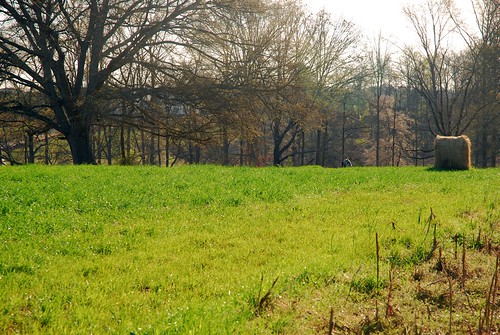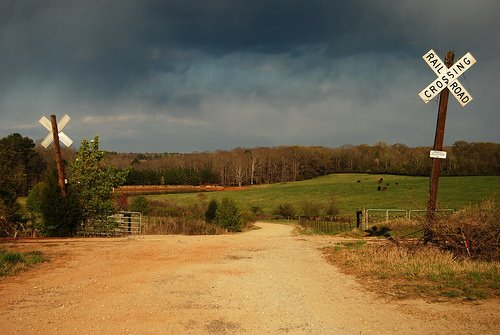First training day with the local NAVHDA chapter. Some folks were preparing for the upcoming Natural Ability test and they invited us along.
If you look closely, you can see her rounding the corner just left of the hay bale:

NAVHDA Test Rules - NA:
"The ability to concentrate on a track is an important trait of the versatile hunting dog. [...] This exercise is primarily a test of the dog’s ability to use its nose and to concentrate on the track. Desire and cooperation are also factors which are noted by the Judges during the course of the test.
A flightless pheasant or chukar is released in an area reserved for the tracking. [...] After the bird has gone a sufficient distance and is out of sight, the dog is brought to the release spot and the handler sets the dog on the track. After releasing the dog, the handler will stand quietly, facing forward and allow the dog to track on his own. It is important to calm the dog for this test. The handler should ensure the dog is concentrating on the track before release. A NAVHDA Judge may help a handler start the dog properly. The distance the dog works the track is not as important as the concentration and intensity displayed by the dog when following the track. A dog that follows a track a short distance over ground with little or no vegetation and slowly and deliberately “spells” his way forward should be scored higher than the dog that speeds longer distances with little accuracy, especially under favorable conditions of wind, moisture, vegetation, etc. The young dog must display eagerness and perseverance on a track. [...]The score is dependent upon the quality of the dog’s performance, not the method used. In this test the dog is not required to retrieve the bird, simply to follow the track. "












No comments:
Post a Comment